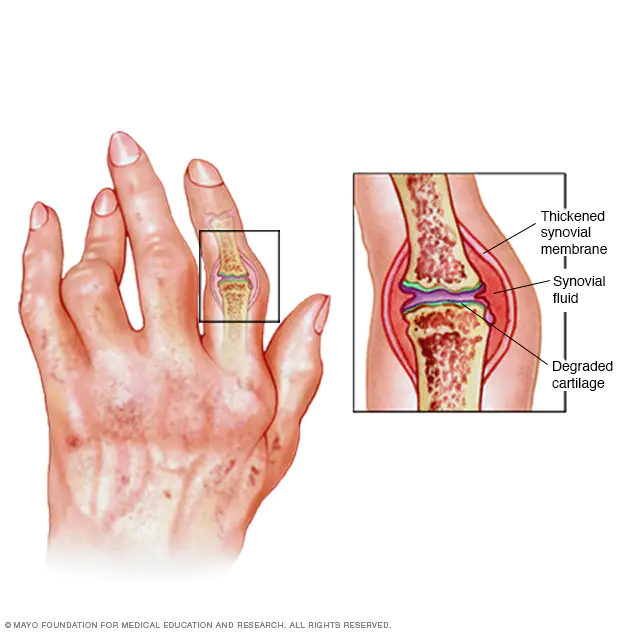Arthritis is the swelling and tenderness of one or more joints. The main symptoms include joint pain and stiffness, which typically worsen with age. The most common types of arthritis are osteoarthritis (OA) and rheumatoid arthritis (RA).

Osteoarthritis (OA) occurs due to the natural wear and tear of cartilage, a firm yet flexible connective tissue in your joints. Injuries or infections can exacerbate this breakdown.
Rheumatoid arthritis (RA) is an autoimmune disorder where the immune system mistakenly attacks the body's own tissues, including the joints.
Two wedge-shaped pieces of cartilage called the meniscus act as shock absorbers between your thighbone and shinbone. They help cushion the joint and keep it stable. The knee is the largest and strongest joint in your body, composed of the lower end of the femur (thighbone), the upper end of the tibia (shinbone), and the patella (kneecap). The ends of these bones are covered with articular cartilage, a smooth substance that protects and cushions the bones.
Arthritis pain, also called arthralgia, can feel like a dull ache or a burning sensation. Pain often starts after using the joint extensively, such as gardening or climbing stairs. Some people feel soreness first thing in the morning.
Joints are cushioned and supported by soft tissues that prevent bones from rubbing against each other. Articular cartilage is key in helping joints move smoothly without friction or pain. Some joints have a synovial membrane, which is a fluid-filled pad that lubricates the joints. Tendons and ligaments support joints, with tendons connecting muscles to bones and ligaments connecting bones to other bones.
Arthritis is a broad term that describes more than 100 different joint conditions. The most common types of arthritis include:
Rheumatoid arthritis is a chronic disease that attacks multiple joints throughout the body, including the knee joint. It is symmetrical, meaning that it usually affects the same joint on both sides of the body. In rheumatoid arthritis, the synovial membrane that covers the knee joint begins to swell. This results in knee pain and stiffness. Rheumatoid arthritis is an autoimmune disease. This means that the immune system attacks its own tissues. The immune system damages normal tissue (such as cartilage and ligaments) and softens the bone.
Posttraumatic arthritis is form of arthritis that develops after an injury to the knee. For example, a broken bone may damage the joint surface and lead to arthritis years after the injury. Meniscal tears and ligament injuries can cause instability and additional wear on the knee joint which, over time, can result in arthritis.